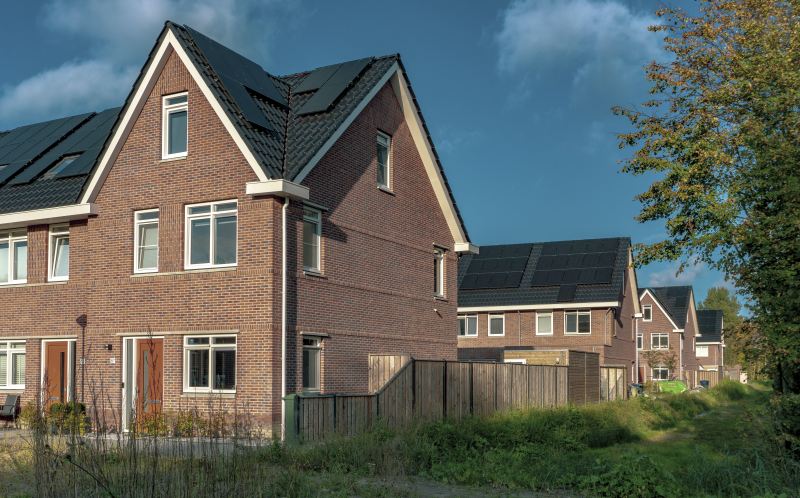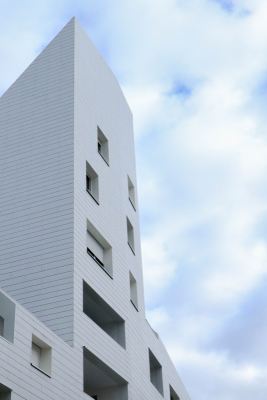Energy efficiency in buildings
People use energy for a variety of purposes, including transportation, cooking, heating and cooling rooms, manufacturing, lighting, and entertainment. Humans’ choices about how they use energy, such as shutting off equipment when they're not in use or purchasing electric vehicles and appliances, have an impact on the environment and people's lives. Building designers are aiming to improve building efficiency before incorporating renewable energy sources, resulting in dwellings that are using zero energy.
Fortunately, an increasing number of intelligent home and business owners are realizing that energy efficiency may save them thousands, if not millions, of dollars. Many construction experts understand how to develop and repair homes and other structures to be energy efficient, ecological, high-performance, sustainable, and even hydrocarbon independent (such buildings are often referred to as zero-energy buildings). There is a wide range of goods available, including Energy Star® appliances and HVAC systems, LED lighting, encapsulation, high-performance windows, and far more. Organic construction materials can also be used in place of petroleum-based components. Furthermore, emerging financial methods like on-bill financing can enable homeowners to improve the efficiency of their houses without making any upfront investments.

Reduced energy prices are the greatest advantage of efforts to enhance energy efficiency in buildings, but there are additional advantages to consider as well. The goal of energy-efficient technologies is to minimize energy consumption while preserving or increasing the level of services delivered in the facility. Reduced energy use for spatial heating and/or refrigeration and water convection, lower electricity use for light sources, office equipment, and domestic type equipment, low maintenance costs, improved comfort, enhanced property value are among the benefits likely to result from energy efficiency assets in buildings.
The first and foremost “old innovation” for eco-buildings is their shape. The amount of space exposed to the outdoors through external ceilings and walls is determined by the form of the facility. One needs to keep this open space to a minimum level to save energy. A classic square or rectangle floor plan is by far the most cost-effective to construct and maintain. When a home has a complicated design, it increases the exposed surface area just as well as both construction and energy expenditures.
Another issue to consider while objectively speaking of energy efficiency in buildings is fabric. Improving the insulation of the building’s fabric should be considered by facility engineers. It is a well-known fact that two-third of heat loss is caused by conduction through floors, windows, ceilings, walls, and doors. High levels of insulation in the ceilings, facades, basement walls, and entrances can minimize heat movement in or out of the building due to conduction.

Windows also play an important role in buildings’ energy efficiency. Tenants should have easy control over windows, as well as regulated air circulation that does not blow things off tables or trigger draughts. In the summer, night ventilation could be an excellent way to keep the temperature comfortable. Because it seems paradoxical to keep the windows open before quitting a building at night, it is crucial that residents comprehend how the facility is supposed to be run, or those appropriate control systems are implemented. Sustainable ventilation may be impossible to employ in some instances due to excessive ambient noise levels or air pollution.
What can be even more important than lighting in the houses? Natural light in dwellings not only saves energy but also produces a beautiful atmosphere that increases the tenants' well-being. The provision of effective daylight in dwellings can be gained using daylight factors and by making sure that tenants, lining in a particular house, have a glimpse of the sky. The average daylight factor is affected by the size and area of windowpanes in relation to the room, the glass's light visible range, the brightness of inner surfaces and finally, the depth of reveals, and the existence of overhangs and other outer obstructions that may limit the number of daylight sources entering the room. The design of the windows has a significant influence on the amount of light that comes into the room throughout the day. A window will provide effective sunlight into a room to a length twice the head altitude of the opening, as a general rule of thumb. The utilization of high ceilings and glass top windows can help to provide adequate lighting.
All being summed up, the construction industry has the potential to play a significant part in stabilizing CO2 levels in the atmosphere, and the next wave of buildings might deliver a slew of other benefits, including enhanced affordability, wellness, security, and salability. Improving building energy efficiency may cut the emission of carbon dioxide significantly, while simultaneously encouraging job development and making energy more accessible for consumers, which is the minimum of benefits it can bring. The main outcome is surely a healthy planet for the next generations.

